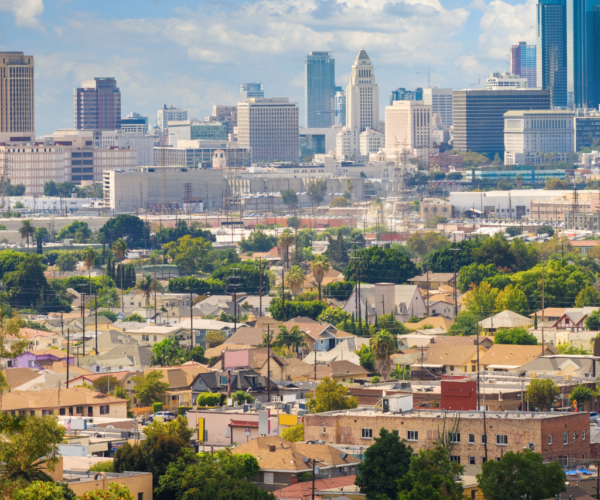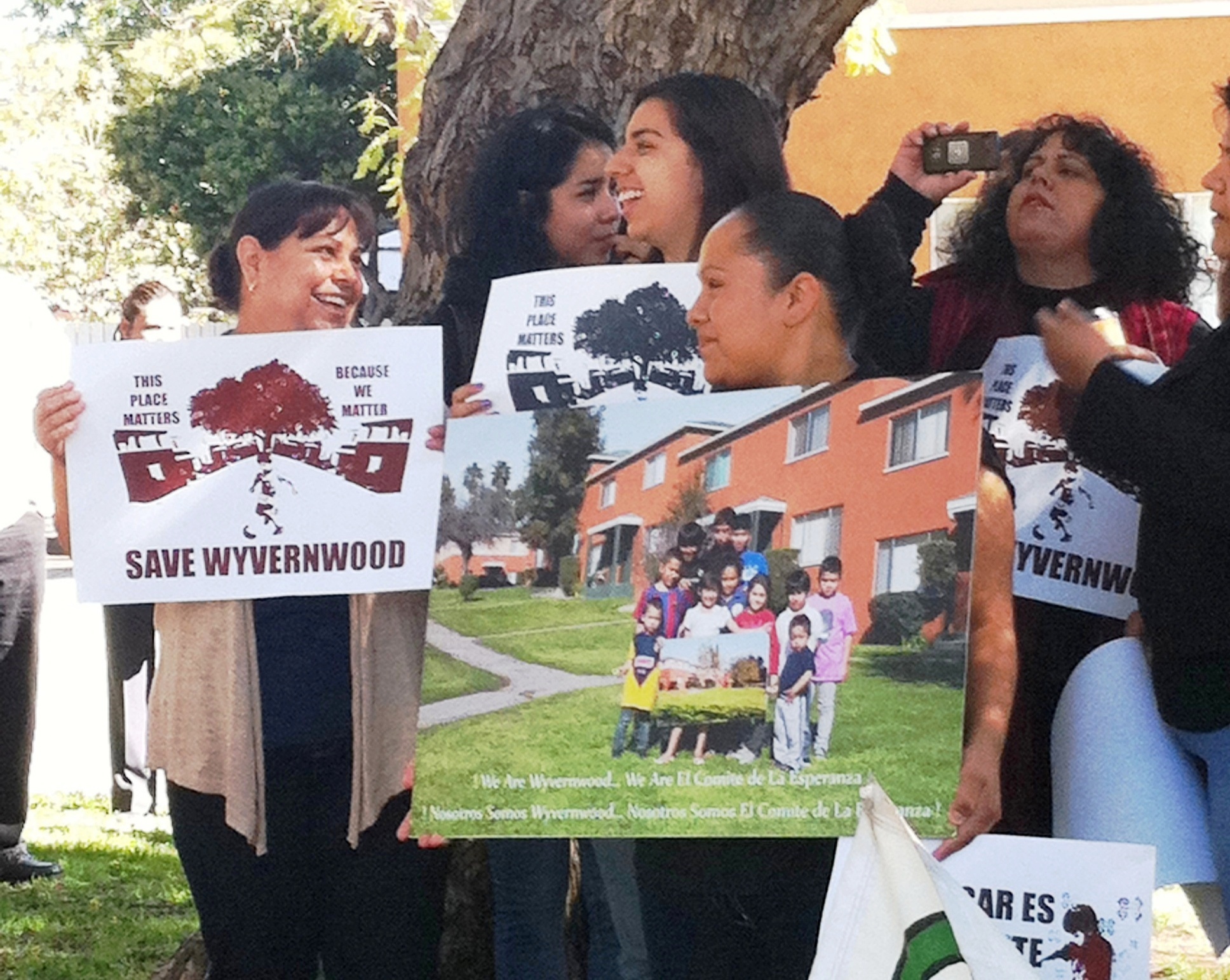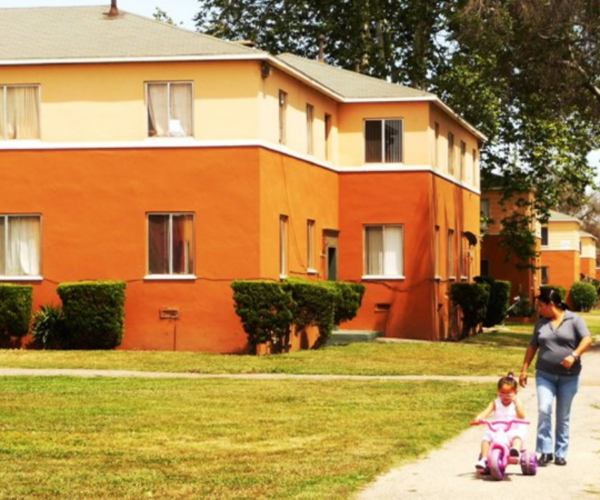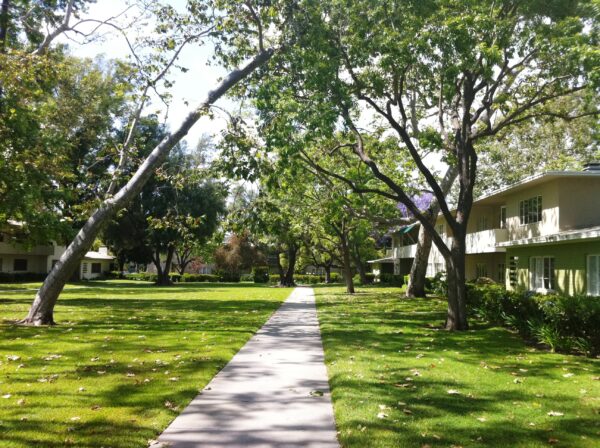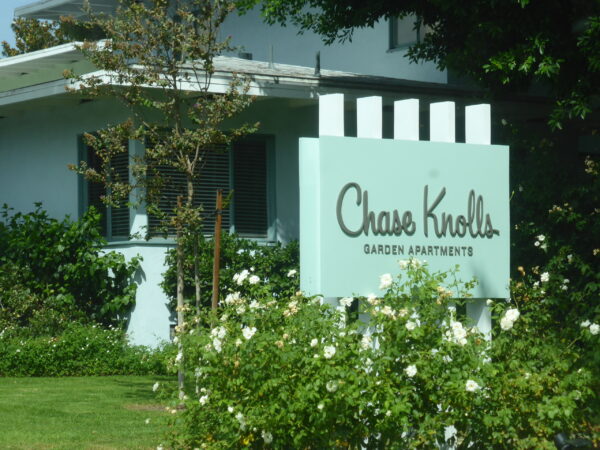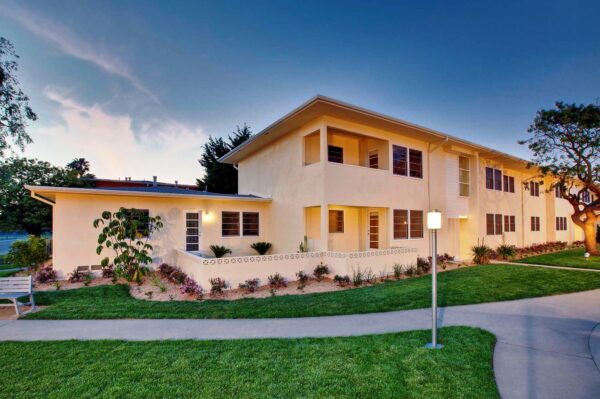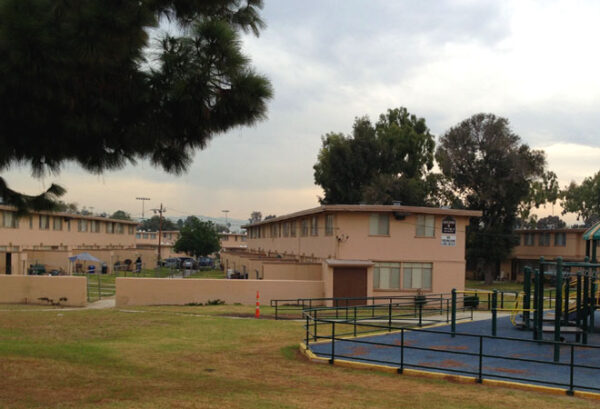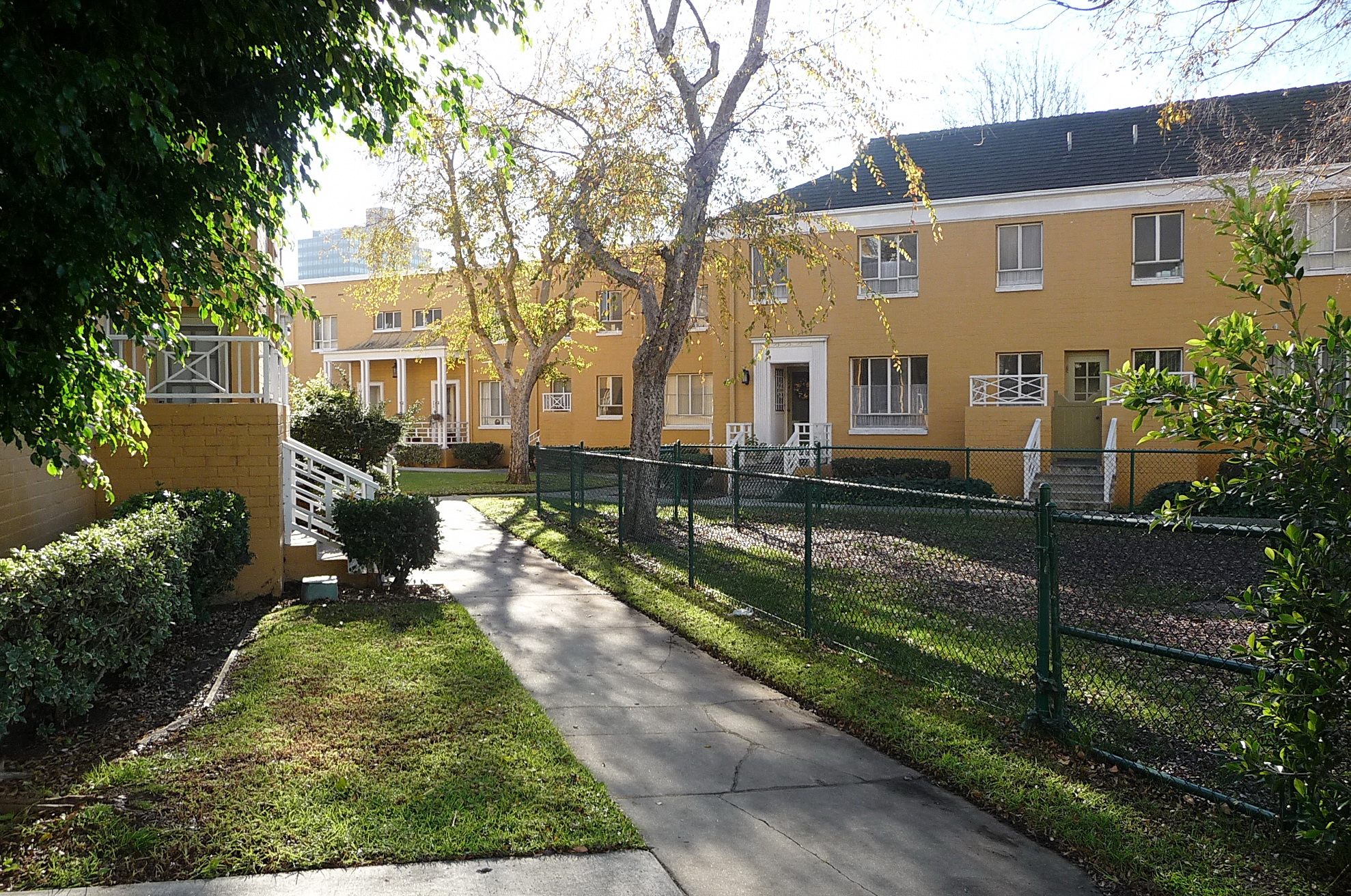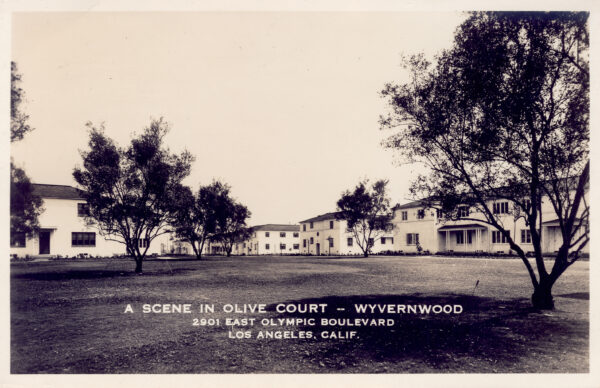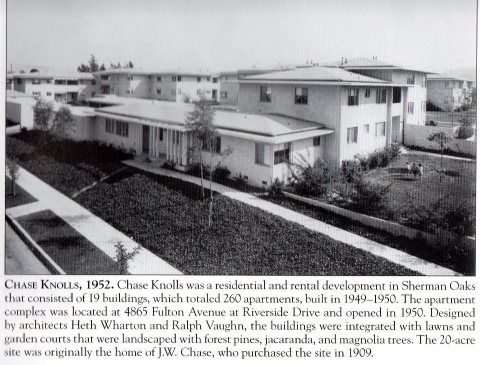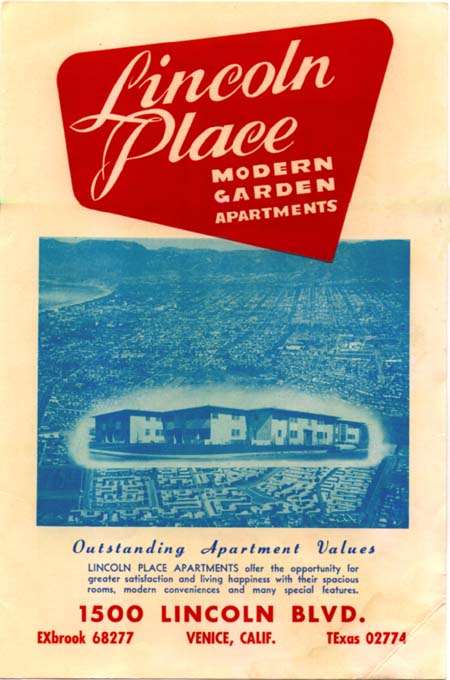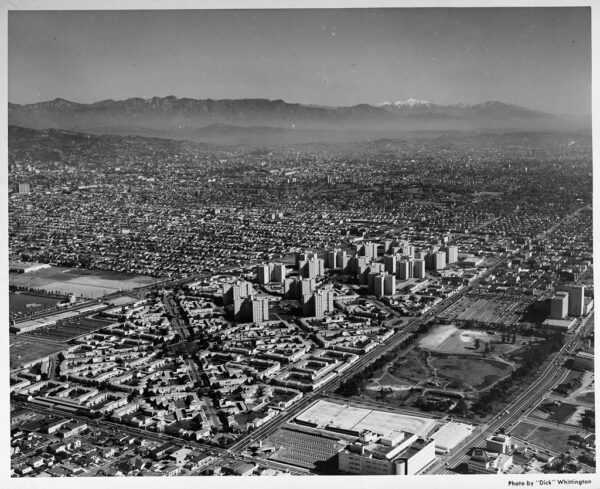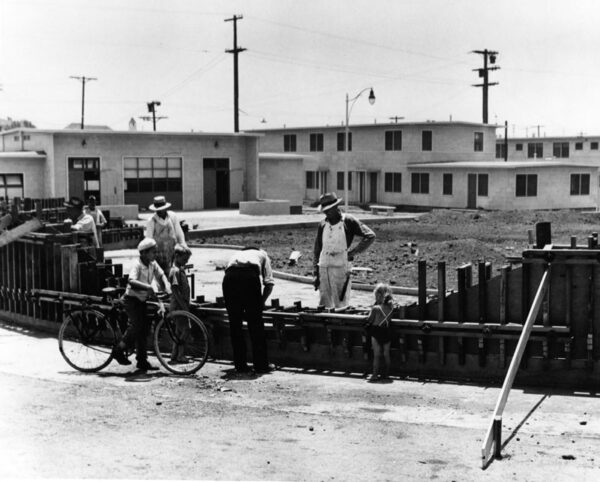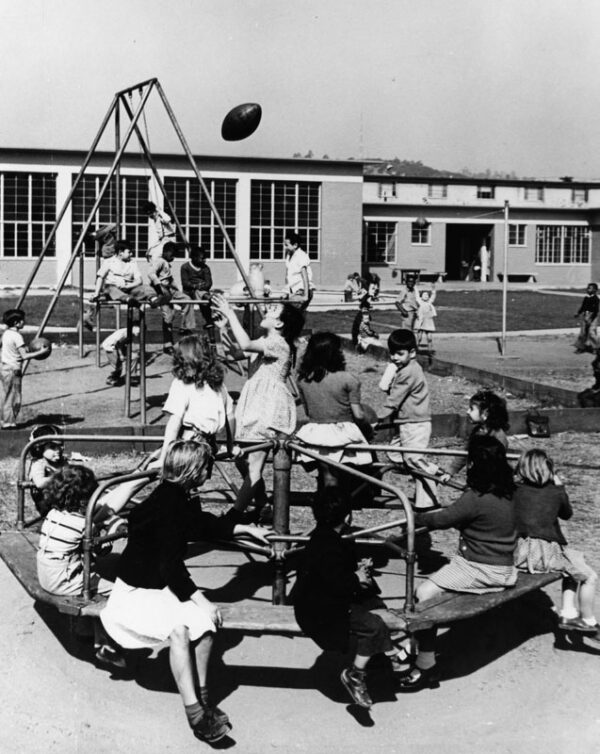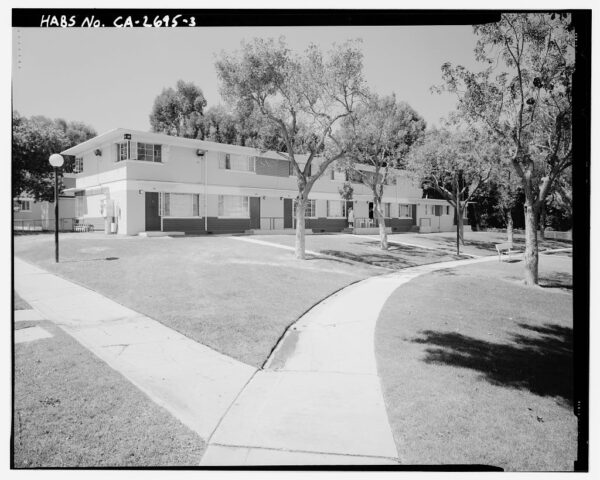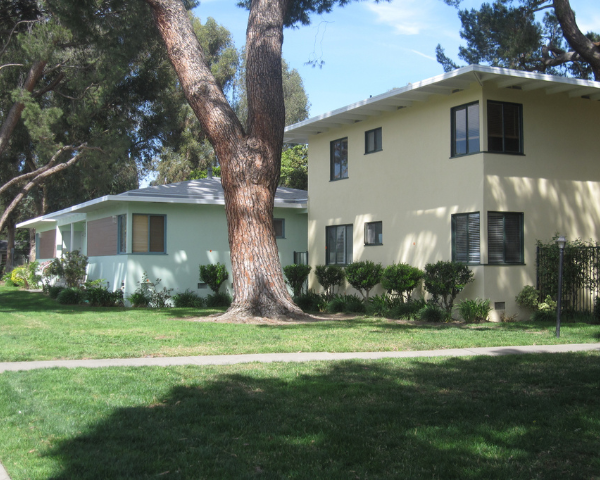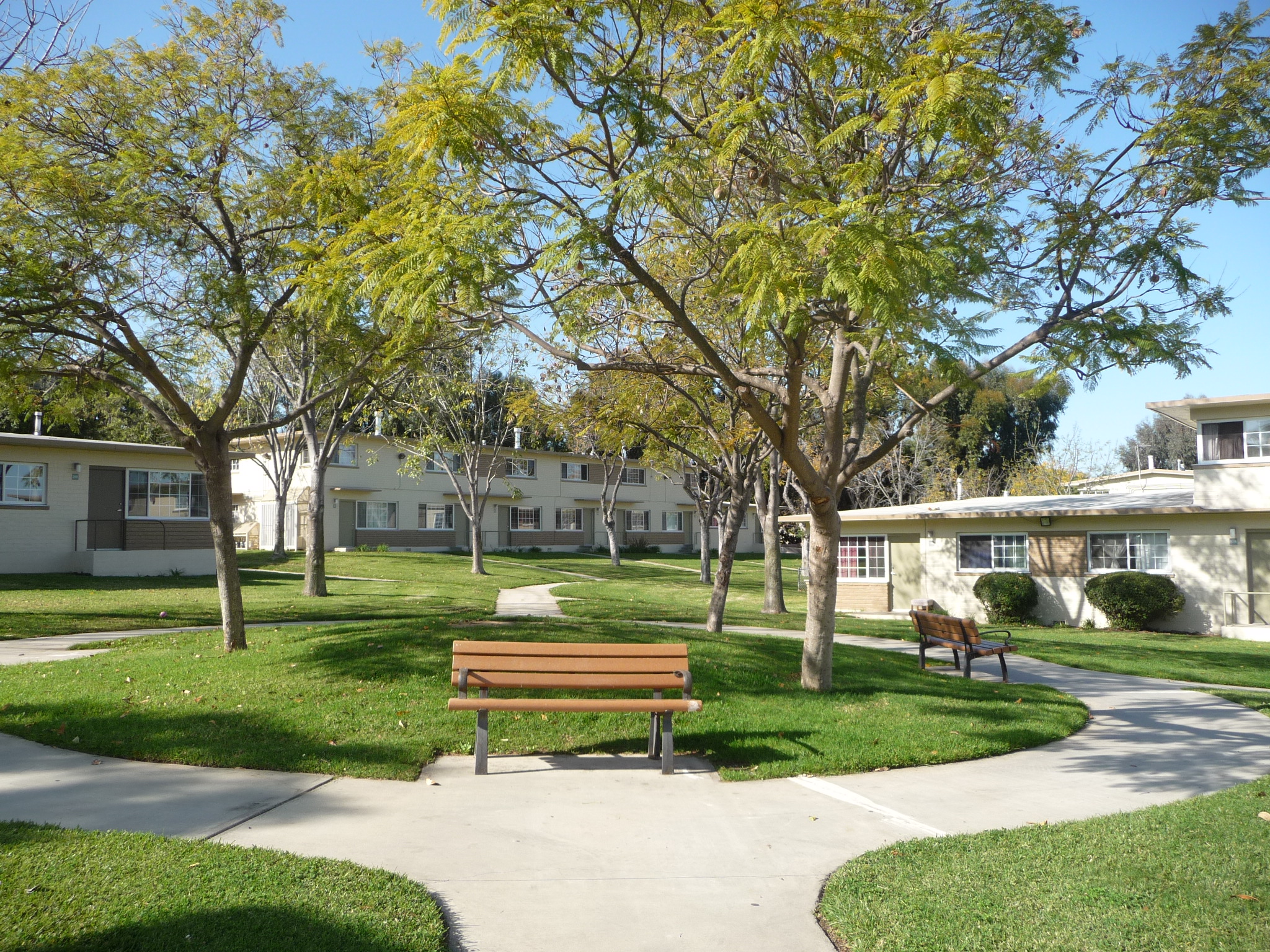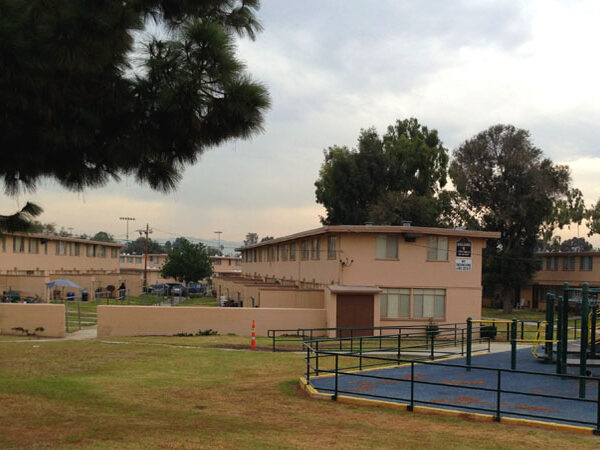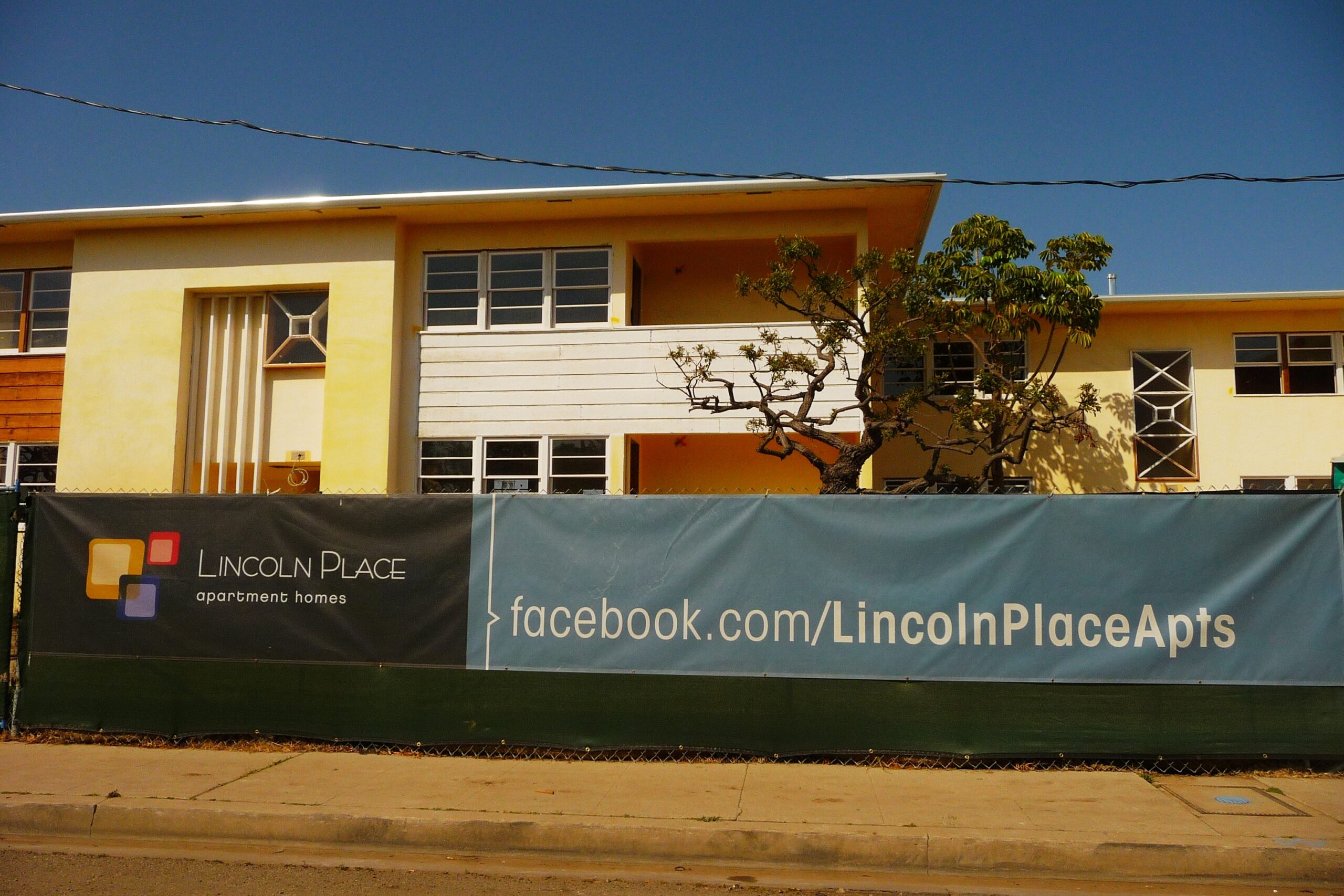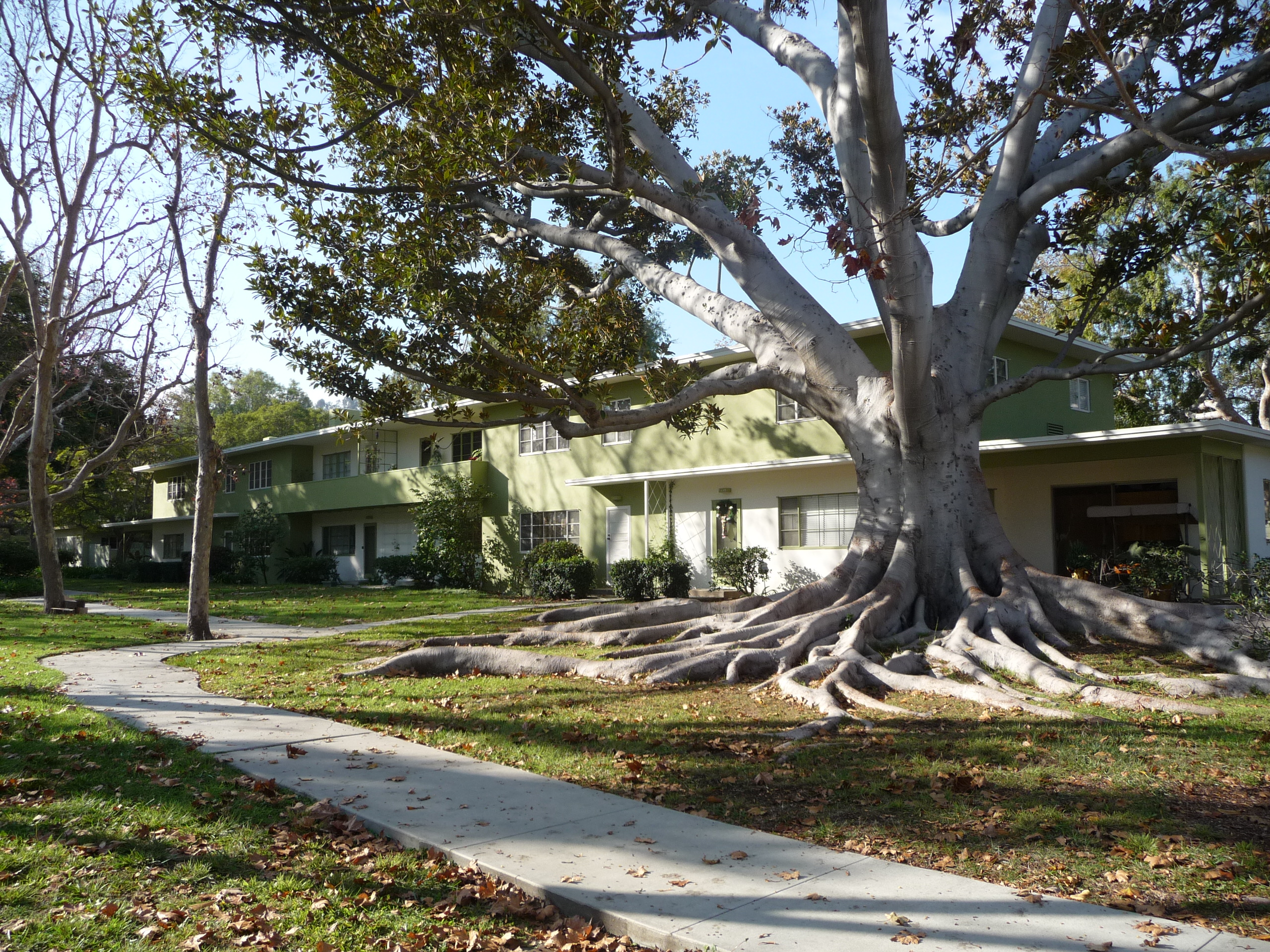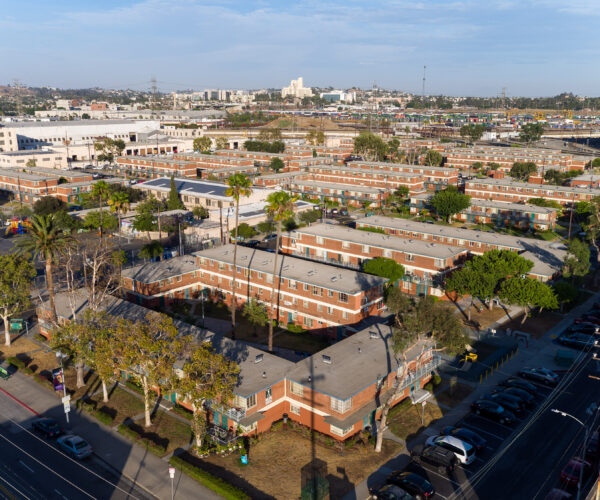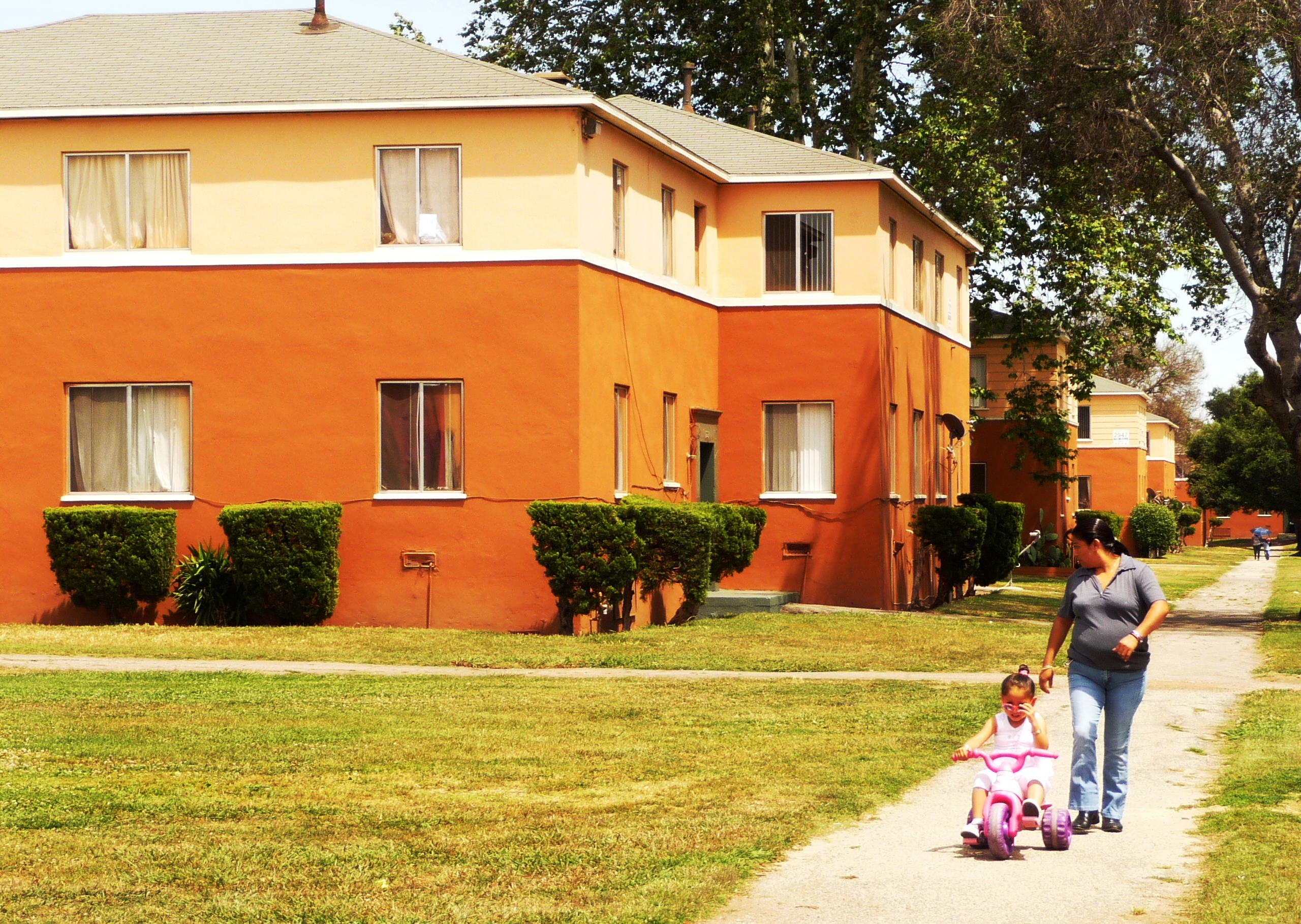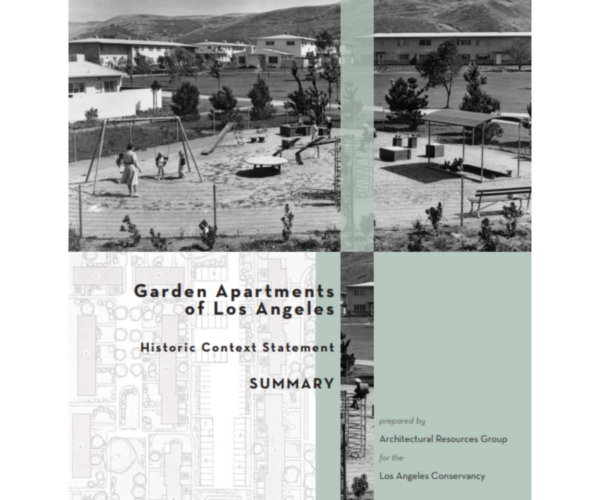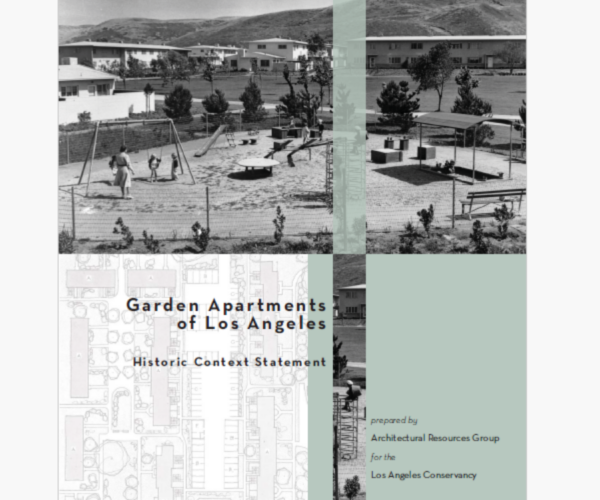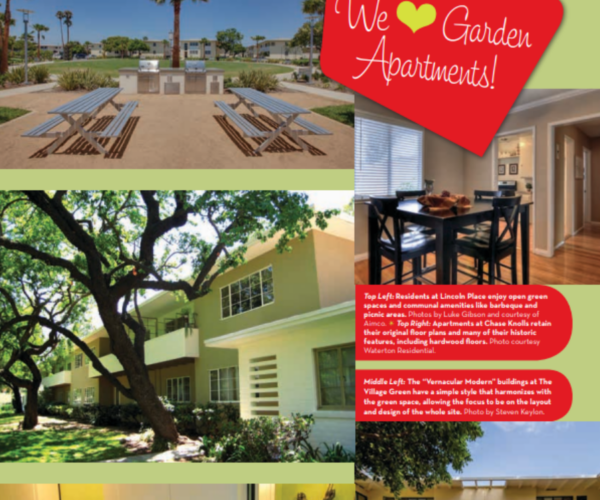We Heart Garden Apartments!
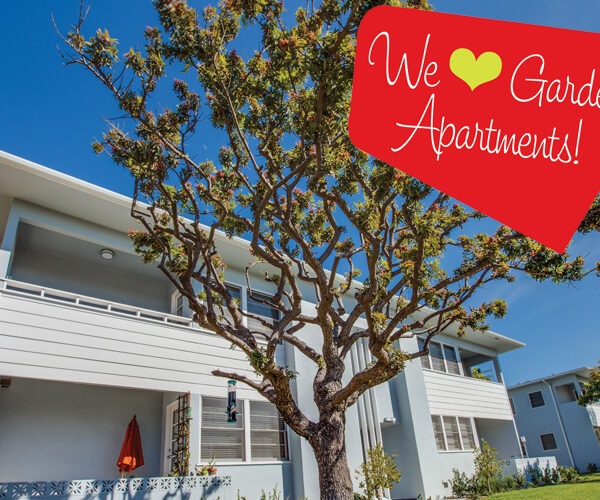
Curating The City
We Heart Garden Apartments!

Overview
As anyone who has lived in one will tell you, garden apartments are extraordinary places. They are designed around people’s and families’ needs, offer a healthy quality of life for the average apartment dweller, and prioritize nature and community.
Throughout Greater Los Angeles and the nation, garden apartments tell an important story about how housing and landscape site planning came together in the early twentieth century to create an entirely new and innovative approach to multi-family living.
Responding to overcrowded, unsanitary, and dilapidated housing conditions for the working poor in urban centers, proponents of the Garden City Movement imagined planned, self-contained communities on the edge of cities, with extensive greenbelts and close to industry to support employment for residents.
Says architectural historian Katie Horak:
“This ‘expression of humanness’ and the extraordinary care taken by their designers to create healthy, safe, and beautiful places to live still resonates, some seventy years later.”
Sadly, one of the qualities that makes them so special – vast open space – also imperils them today. As the demands for higher-density planning accelerate, garden apartment communities are increasingly at risk for demolition and redevelopment.
Wander through this microsite to learn more about the Los Angeles garden apartments and the Conservancy’s and others’ efforts to save these historic built environments.
History of Garden Apartments
Garden apartments epitomize Southern California’s indoor/outdoor living ideal.
In the early twentieth century, architects and renowned urban planners Clarence S. Stein and Henry Wright brought a new, modern form of housing to the United States: the Garden City Movement. Based on urban planning principles of British urban planner Ebenezer Howard, Stein and Wright envisioned an orchestrated environment that included low-density buildings, human scale, and acres of shared open space.
While garden apartment communities sprung up around the country, this design philosophy truly flourished in Los Angeles.
The region’s climate was well-suited to the emphasis of nature and open space. The carefully planned complexes provided an attractive and affordable alternative to the substandard housing of the Great Depression. They also provided quality housing for defense workers during World War II and returning veterans and their families after the war.
Primary characteristics of the garden apartment complex include:
- Development of the site as a “superblock”
- Separation of automobile and pedestrian traffic
- Low to medium density and building coverage
- Standardized building types
- Emphasis on open space and park-like landscaping
In 2012, architectural historian Katie Horak of Architectural Resources Group and landscape historian Steven Keylon co-authored a historic context statement on Los Angeles’ garden apartments for the Conservancy. The statement included a detailed examination of the historical patterns and trends that led to this local movement.
Garden Apartments of Los Angeles Context Statement
Garden Apartments of Los Angeles Context Statement Summary
You can also read more about several of Los Angeles’ garden apartments in our 2014 We Heart Garden Apartments! walking tour booklet.
Saving L.A.'s Garden Apartments
Following proposed projects at Chase Knolls, Lincoln Place, and Wyvernwood between 2000-2015, the Conservancy embarked on a campaign to raise awareness of the significance of garden apartments and the threats they face. Many garden apartments remain at risk of development pressures; however, the Conservancy’s campaign successfully broadened awareness and guided rehabilitation projects at some of the City’s most significant garden apartment complexes.
Greater Los Angeles has what is believed to be the second-largest collection of garden apartments in the nation (behind Arlington County, Virginia), with nearly forty built from the late 1930s through the mid-1950s.
Though varied in their execution, these complexes were characterized by a high ratio of open space to buildings, the placement of residential units for maximum sunlight and fresh air, and the separation of pedestrian and vehicular traffic.
The intent and design of these places put people first, prioritizing a high standard of living and opportunities for social interaction. Decades after construction, they continue fostering a community spirit for their residents.
Nevertheless, the Los Angeles area has increasingly vulnerable garden apartments. Their large sites, open spaces, moderate-to-low density, and valuable real estate put them at risk for demolition and redevelopment.
The Conservancy and many others have pursued successful efforts to save historic garden apartment communities following project proposals to demolish and redevelop sites.
The private and public sectors embraced the garden apartment complex as a relatively new building type and planning approach for Los Angeles in the 1930s. The idea caught on throughout the U.S., propelled by the Federal Housing Administration’s (FHA) preference for this new form of housing and subsequent backing with loan guarantees.
Despite their continued community importance, garden apartments are a common target for redevelopment. The desire for higher-density housing places immense pressure on these low-density complexes.
Chase Knolls and Lincoln Place were the subjects of hard-fought preservation battles in recent years. Both campaigns brought together a team of residents, preservationists, and elected officials to achieve win-win solutions for those historic sites.
Garden Apartments in the U.S.
Following Stein and Wright, a group of visionaries and designers introduced garden apartment ideals nationwide. The idea caught on particularly since the Federal Housing Administration (FHA) favored this new form of housing for a time and backed such projects with loan guarantees.
While Stein directly influenced places such as Village Green in Los Angeles (originally Baldwin Hills Village) and Carmelitos in North Long Beach, his and Wright’s indirect influence can be readily seen at other garden apartments in Los Angeles.
In Toward New Towns for America, Stein himself states, “I have told the story of new communities at…Baldwin Hills Village primarily to see what could be found to help us in successfully conceiving, planning, constructing and operating New Towns.” Stein was hopeful that his concepts would be repeated throughout the United States.
In addition to Los Angeles, places such as New York, New Jersey, Maryland, Pennsylvania, and Virginia have built a rich legacy and
concentration of garden apartments that share Stein and Wright’s ideals while maintaining distinct personalities. The same can be said for garden apartments within Greater Los Angeles.
Clarence S. Stein & Henry Wright
- Guide to the Clarence Stein Papers, 1905-1983. Cornell University.
- Guide to the Henry Wright Papers, 1907-1960, 1907-1938. Cornell University.
National Housing
- Historic Residential Suburbs in the United States, 1830-1960. National Register of Historic Places Multiple Property Documentation Form. September 2002.
- Public Housing in the United States. National Register of Historic Places Multiple Property Documentation Form. December 1, 2004.
Arlington County, Virginia
- Fort Myer Heights
- Garden Apartments, Apartment Houses and Apartment Complexes in Arlington County, Virginia: 1934-1954. National Register of Historic Places Multiple Property Documentation Form. June 2002.
Chatham Village, Pittsburgh, Pennsylvania
- National Historic Landmark Nomination. Chatham Village. 2005.
- Timeline. Chatham Village Archive.
Greenbelt, Maryland
- National Historic Landmark Nomination. Greenbelt, Maryland. 1996.
Greendale, Milwaukee, Wisconsin
National Historic Landmark Nomination. Greendale Historic District.
Lathrop Homes, Chicago
Los Angeles Garden Apartments
- Garden Apartments of Los Angeles: Historic Context Statement. Prepared by Architectural Resources Group for the Los Angeles Conservancy. October 2012.
- Historical Resources Technical Report, Wyvernwood Apartments, June 2011.
Includes brief context of garden apartment communities in Los Angeles.
Radburn, Fair Lawn, New Jersey
- National Historic Landmark Nomination. Radburn. 2005.
Sunnyside Gardens, Queens Borough, New York City
- Sunnyside Gardens Historic District Designation Report. New York City Landmarks Preservation Commission. June 26, 2007.
